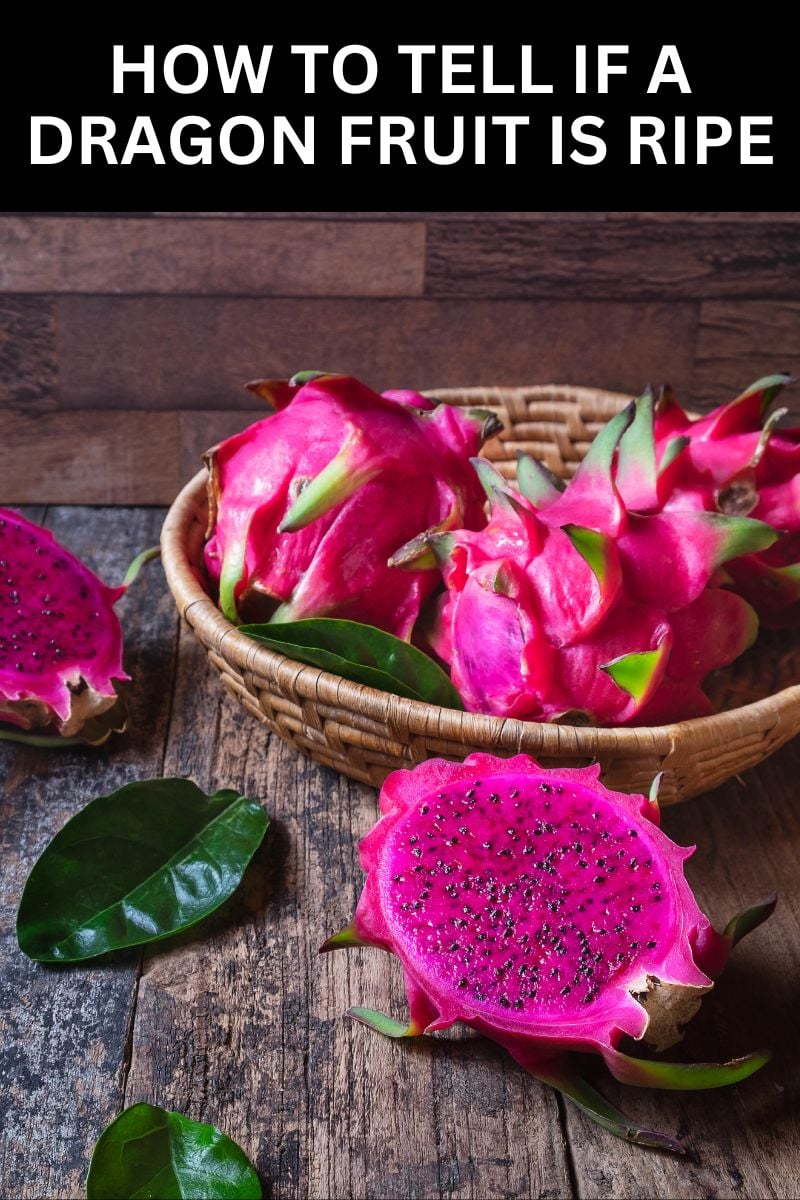Dragon fruit, also known as pitaya, is a tropical delight that’s as visually stunning as it is nutritious. With its vibrant exterior and speckled interior, it’s no wonder this fruit has captured the attention of food enthusiasts worldwide. However, selecting a ripe dragon fruit can be a bit of a challenge, especially if you’re unfamiliar with its unique characteristics. Fear not! In this guide, we’ll explore ten surefire ways to determine if a dragon fruit is ripe and ready to enjoy.
1. Check the Skin Color
One of the most apparent indicators of a ripe dragon fruit is the color of its skin. For the red-skinned varieties, look for a bright, even color that’s uniformly vibrant. The skin should be a deep pink or red hue, free from significant green patches. Green areas often indicate that the fruit is still unripe. Yellow dragon fruits should exhibit a bright, lemon-yellow color when ripe.
2. Examine the “Wings”
Dragon fruits have leafy extensions or “wings” that protrude from their skin. On a ripe fruit, these wings will start to wither slightly and turn brown at the tips. If the wings are still green and fresh-looking, the fruit likely needs more time to ripen. The withering of the wings is a natural part of the ripening process.
3. Feel the Texture
Gently press the skin of the dragon fruit with your thumb. A ripe dragon fruit will have a slight give, similar to a ripe avocado or kiwi. It shouldn’t be too soft or mushy—that’s a sign of over-ripeness. Conversely, if the fruit is very firm, it may need a few more days to ripen.
4. Inspect for Blemishes
While minor blemishes are normal, excessive bruising or deep cuts can indicate that the fruit is damaged or overripe. The skin should be smooth and free from significant imperfections. Small spots are generally harmless, but avoid fruits with large, dark spots or signs of mold.
5. Assess the Weight
Pick up the dragon fruit and gauge its weight relative to its size. A ripe dragon fruit will feel heavy, indicating that it’s full of juicy, flavorful flesh. If the fruit feels light, it may be dry or lacking in pulp, which could affect its taste and texture.
6. Smell the Fruit
Bring the fruit close to your nose and take a gentle sniff. Ripe dragon fruit has a mild, sweet aroma. If the fruit has a strong, fermented smell, it might be overripe or starting to spoil. Lack of any scent isn’t necessarily a bad sign, as dragon fruit’s aroma is typically subtle.
7. Observe the Spines (If Present)
Some dragon fruit varieties, particularly the yellow ones, have small spines on their skin. In ripe fruits, these spines often dry out and can be brushed off easily. If the spines are still firmly attached and green, the fruit may need more time to ripen.
8. Consider the Time of Harvest
If you’re purchasing dragon fruit from a local market or farm, ask about the harvest time. Dragon fruits generally ripen in late summer to early fall. Knowing when the fruit was picked can give you insight into its ripeness. Fruits harvested at peak ripeness will offer the best flavor and texture.
9. Slice It Open
If you have the opportunity to cut the fruit before purchasing (common in some markets), examine the flesh. The interior should be evenly colored—white or red/pink—with numerous tiny black seeds distributed throughout. The flesh should be firm yet tender, not mushy or dry.
10. Taste Test
While not always possible before purchase, tasting the fruit is the ultimate test of ripeness. A ripe dragon fruit has a mildly sweet flavor with a texture similar to a kiwi or pear. If the flavor is bland or the texture is off, the fruit may not be at its peak ripeness.
Bonus Tips for Enjoying Dragon Fruit
- Storage: If you purchase an unripe dragon fruit, leave it at room temperature for a couple of days. To slow down the ripening process, store it in the refrigerator.
- Preparation: Dragon fruit is easy to prepare. Simply slice it in half and scoop out the flesh with a spoon, or cut it into sections like you would an apple.
- Culinary Uses: Enjoy dragon fruit on its own, add it to smoothies, or use it as a vibrant addition to salads and desserts.
Conclusion
Selecting a ripe dragon fruit doesn’t have to be daunting. By paying attention to these ten indicators—skin color, wing condition, texture, blemishes, weight, smell, spines, harvest time, interior appearance, and taste—you can confidently choose a fruit that’s ready to delight your senses. Whether you’re a seasoned dragon fruit aficionado or trying it for the first time, knowing how to pick a ripe one will enhance your culinary experience.
So next time you’re at the market, take a moment to examine the dragon fruits on display. With these tips in hand, you’ll be well-equipped to select the perfect fruit. Happy tasting!
